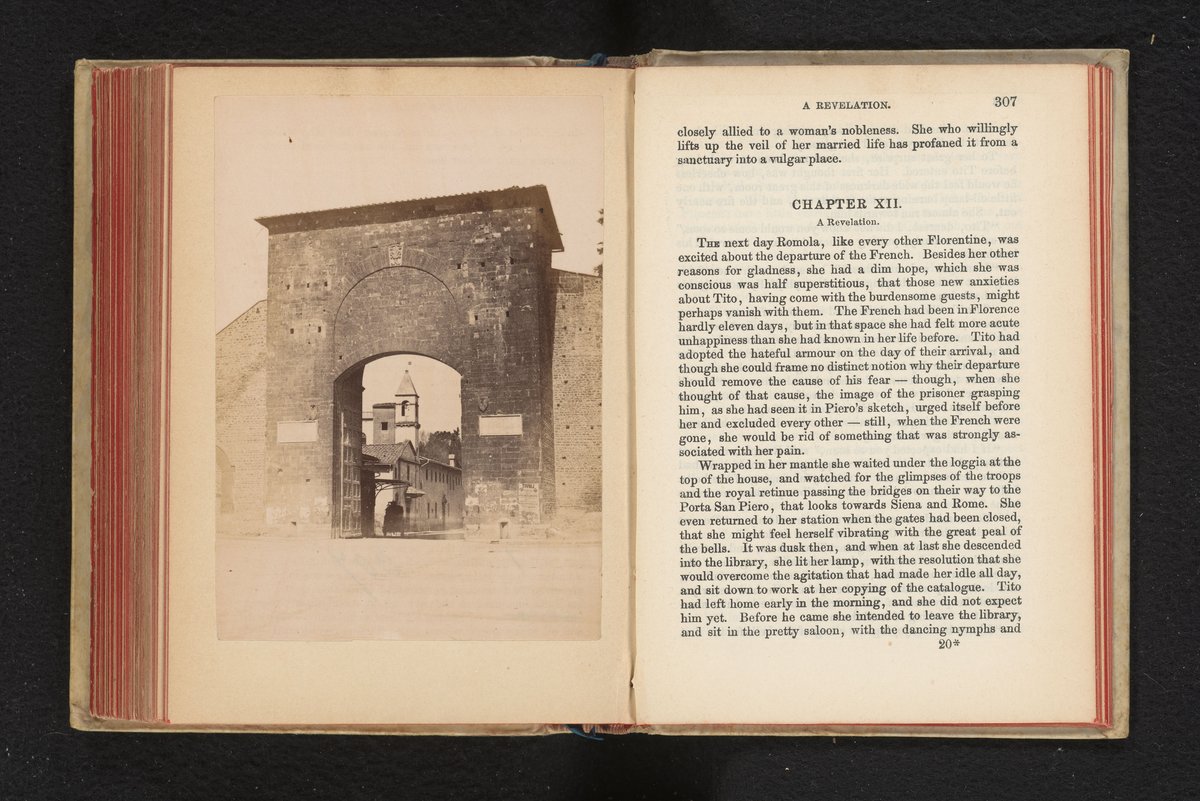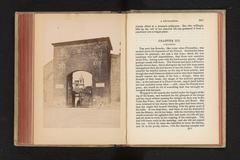
Porta Romana Florence, Italy: Visiting Hours, Tickets, and Travel Guide
Date: 15/06/2025
Introduction
Porta Romana is one of Florence’s most significant medieval landmarks, standing at the southernmost point of the city’s ancient walls. This monumental gateway, built in the early 14th century, embodies centuries of history, architectural mastery, and cultural vibrancy. Originally constructed as Florence’s primary southern entrance—guarding the route from Siena and Rome—Porta Romana played both defensive and ceremonial roles. Today, it serves as a lively threshold to the Oltrarno district and the renowned Boboli Gardens, blending the city’s medieval past with its dynamic present.
Whether you are a history enthusiast, architecture aficionado, or curious traveler, Porta Romana offers a unique lens into Florence’s rich narrative. This comprehensive guide covers the history, architectural highlights, visiting hours, ticketing, accessibility, nearby attractions, travel tips, and frequently asked questions about Porta Romana, ensuring you have everything you need for an insightful visit.
(Wikipedia, Visit Florence, Muse Firenze)
Historical Overview
Origins and Construction
Porta Romana was constructed between 1328 and 1331 as part of Florence’s final and most extensive circuit of defensive walls. Its strategic location on the road to Siena and Rome gave the gate its name and primary purpose: controlling southern access to the city. The construction project was a testament to Florence’s prosperity and political ambition during the Middle Ages. Some sources attribute its design to Andrea Orcagna, a notable Florentine artist and architect.
With walls measuring up to 1.75 meters thick and a moat 17.5 meters wide, Porta Romana was built for robust defense. The original wooden doors, reinforced with iron studs, are still in place, offering a rare, tangible connection to the city’s medieval past. The keys to these doors are preserved at the Palazzo Vecchio museum.
Architectural Significance
Porta Romana is the second largest of Florence’s surviving city gates. Its central arched passageway is flanked by two smaller arches, and the gate once featured an antiporta (outer gate) for added defense. Unlike other gates, Porta Romana was not modified with artillery embrasures in the 16th century, although its height was reduced to lessen vulnerability to cannon fire.
Decorative elements historically adorned the gate, including statues of San Pietro, Madonna col Bambino, and San Paolo, attributed to Paolo di Giovanni. These works, once situated in niches above the gate, are now displayed at the Museo del Bargello. The interior also features a restored 16th-century fresco of the Madonna and Child with Saints by Franciabigio, reflecting the gate’s artistic legacy.
Role in Florentine History
Porta Romana not only served as a military stronghold and customs checkpoint but also symbolized Florence’s autonomy and identity, with civic emblems like the Florentine lily and the cross of the Popolo carved into its structure. Major historical events, such as the 1515 ceremonial entry of Pope Leo X, prompted modifications to the gate, underscoring its place in Florence’s political and religious life.
During the 19th-century modernization of Florence, when much of the city’s walls were demolished, Porta Romana and adjacent wall segments were preserved for their historic value. From 1891 to 1935, the gate was a terminus for the Chianti tramway, connecting Florence with the Chianti region and further shifting its role from defense to urban connectivity.
Cultural and Artistic Context
Porta Romana’s surroundings are rich in tradition and creativity. The Oltrarno district, just beyond the gate, is famous for artisan workshops, galleries, and trattorias. The area also features the contemporary bronze sculpture “Dietro-Front” (About Face) by Michelangelo Pistoletto, installed in 1984, symbolizing Florence’s ongoing dialogue between tradition and innovation.
The gate remains a focal point for local festivals and processions, including the annual Festa di San Giovanni, and is an essential part of community identity.
Visitor Information: Hours, Tickets, and Accessibility
Opening Hours
- Exterior: The exterior of Porta Romana is freely accessible at all times.
- Interior & Wall Walks: Access to the guardroom, interior, and wall walkways is only possible via special guided tours, typically available during the summer months and on select dates.
Guided Tour Dates for 2025:
- July 11: 5:00 pm – 8:00 pm
- August 26: 5:00 pm – 8:00 pm
- September 23: 4:00 pm – 7:00 pm
- October 21: 3:00 pm – 6:00 pm
Tours depart every 30 minutes and last about 30 minutes.
Tickets and Reservations
- Exterior: Free, no ticket required.
- Guided Tours (Interior): €4 per person. Free for children under 18.
- Booking: Advance reservation is strongly recommended due to limited group sizes. Book by phone (+39 055-2768224) or online via the Muse Firenze website.
- Age Restriction: Participants must be at least 8 years old.
- Weather Policy: Tours are suspended in bad weather.
Accessibility
- Exterior: Street-level and generally accessible, though some cobblestone surfaces may be uneven.
- Interior: Not suitable for wheelchair users or those with limited mobility due to stairs and uneven surfaces.
- Alternative: The Baluardo a San Giorgio offers accessible fortification tours.
Getting There
- On Foot: A 20–30 minute walk from Florence’s city center (e.g., Duomo or Piazza della Signoria).
- Public Transport: Several ATAF bus lines serve the Oltrarno district and Porta Romana.
- By Car: Limited parking is available in the Oltrarno area; be mindful of ZTL (limited traffic zone) restrictions.
- Tram: The nearest tram stop is Porta al Prato, with connections via bus or a longer walk.
Nearby Attractions
- Boboli Gardens: Renaissance gardens with sculptures, fountains, and panoramic views; main entrance steps from Porta Romana. (Boboli Gardens Official Page)
- Pitti Palace: A Medici palace complex housing several museums.
- Oltrarno District: Artisan workshops, markets, and lively local culture.
- Church of San Felice in Piazza: Historic church with notable artworks.
- Specola Museum: Florence’s natural history museum.
- Piazzale Michelangelo: Iconic viewpoint over Florence, accessible via Viale Machiavelli from Porta Romana.
What to See and Do at Porta Romana
- Examine the Gate: Notice original doors, stonework, and defensive features.
- View Public Art: The “Dietro-Front” sculpture stands just outside the gate.
- Join a Guided Tour: Access interior rooms and walk the medieval walls on select dates.
- Stroll to Boboli Gardens: Enjoy Renaissance landscaping and city views.
- Explore Oltrarno: Discover artisan shops, local trattorias, and authentic Florentine atmosphere.
- Photography: The gate, gardens, and panoramic routes offer excellent photo opportunities, especially in early morning or late afternoon light.
(The Crazy Tourist, Nomadic Matt)
Visitor Facilities
- Restrooms: Available at the Boboli Gardens entrance.
- Cafés & Restaurants: Numerous options in the Oltrarno district.
- Shops: Artisan workshops and boutiques nearby.
- Accommodation: B&Bs and boutique hotels within walking distance.
Tips for Your Visit
- Book tours early to secure your spot, especially in summer.
- Combine your visit with Boboli Gardens and Pitti Palace for a full day itinerary.
- Check official websites for the latest on hours and tour schedules.
- Prepare for weather: Carry water in summer, wear comfortable shoes, and bring sun protection.
- Photography: Flash and tripods may be restricted during guided tours.
(FlorenceWise, Project Expedition)
Frequently Asked Questions (FAQ)
Q: Can I visit Porta Romana without a guided tour?
A: Yes, the exterior is always open to the public. Interior access is only with a guided tour.
Q: Are there entrance fees?
A: The exterior is free. Guided tours of the interior cost €4; children under 18 are free.
Q: Is Porta Romana accessible to those with limited mobility?
A: The gate’s exterior is mostly accessible, but the interior and wall walkway are not suitable for wheelchairs.
Q: Are English-language tours available?
A: Most tours are in Italian; inquire when booking for English-language options.
Q: How do I book a guided tour?
A: Reserve by phone (+39 055-2768224) or online via Muse Firenze.
Visuals and Interactive Media
To enrich your experience, consult high-quality images and virtual tours on official Florence tourism platforms. Interactive maps and self-guided walking tour apps, such as GPSmyCity, can help you plan your route.
Internal Links
External Links
- Porta Romana on Wikipedia
- Visit Florence – Guided Tours
- Muse Firenze Official Website
- ATAF Public Transport
- Florence Tourist Office
- Savoring Italy
- The Tour Guy
- Architecture of Cities: Florence
- Boboli Gardens Official Page
- GPSmyCity
- The Crazy Tourist
- Nomadic Matt
- Project Expedition
- FlorenceWise
- Sestri Levante Ligure
- The Common Wanderer
Conclusion
Porta Romana is more than just an ancient city gate—it is a living testament to Florence’s rich history, architectural ingenuity, and enduring cultural spirit. From its medieval origins as a fortified gateway to its modern role as a symbol of the city’s heritage, Porta Romana offers visitors a unique perspective on Florence’s evolution. With easy access, practical facilities, and proximity to top attractions like the Boboli Gardens and Pitti Palace, Porta Romana is an essential stop for any Florence itinerary.
Plan ahead by checking tour dates and ticket information, and consider using the Audiala app for guided audio tours and up-to-date travel tips. Experience the stories woven into Florence’s historic walls and discover why Porta Romana continues to captivate travelers from around the world.







































































